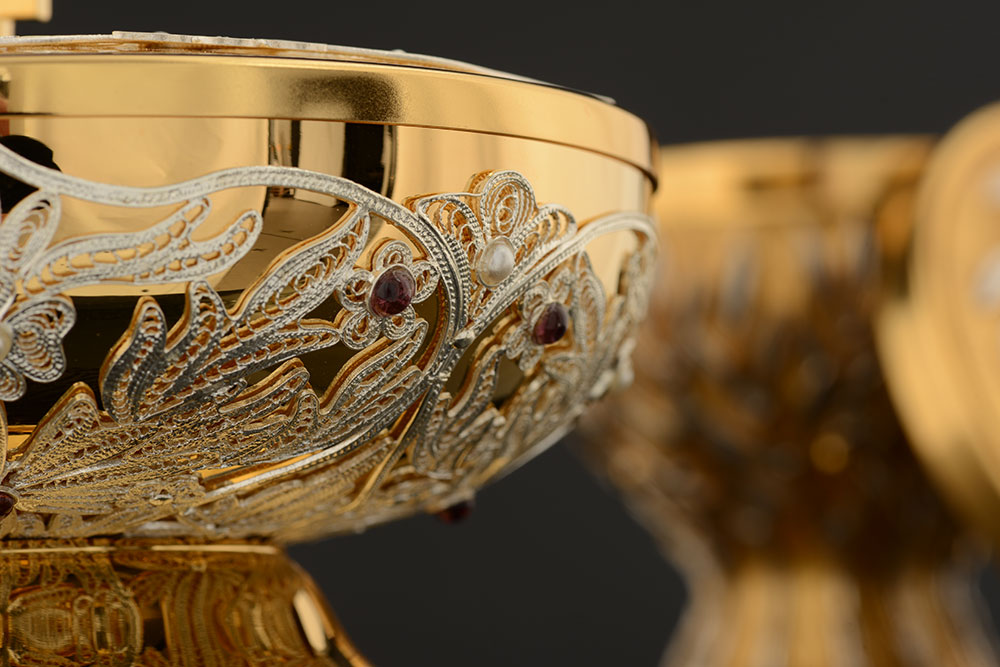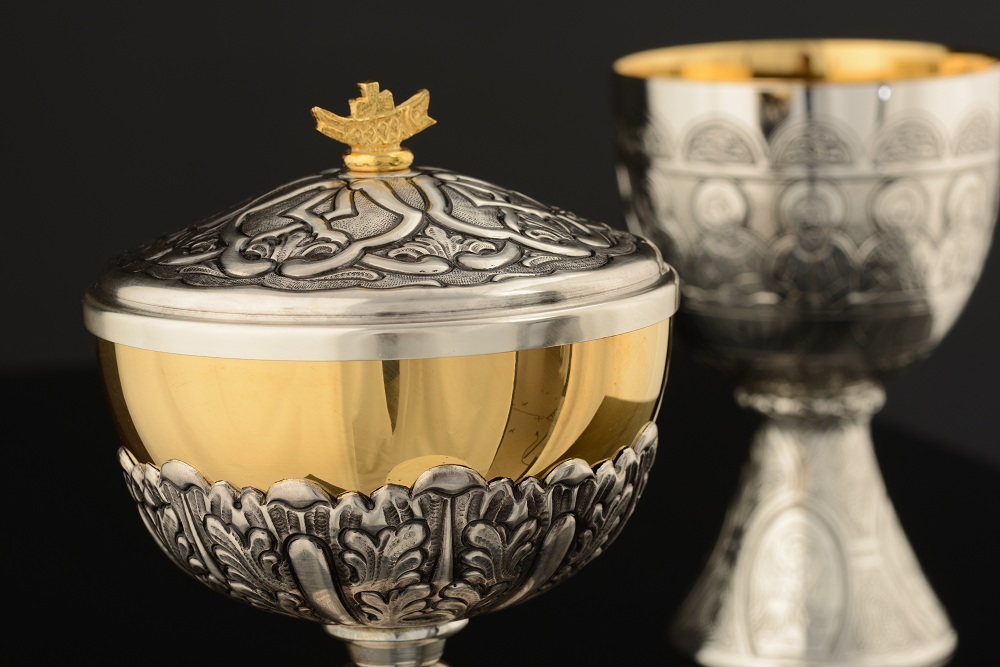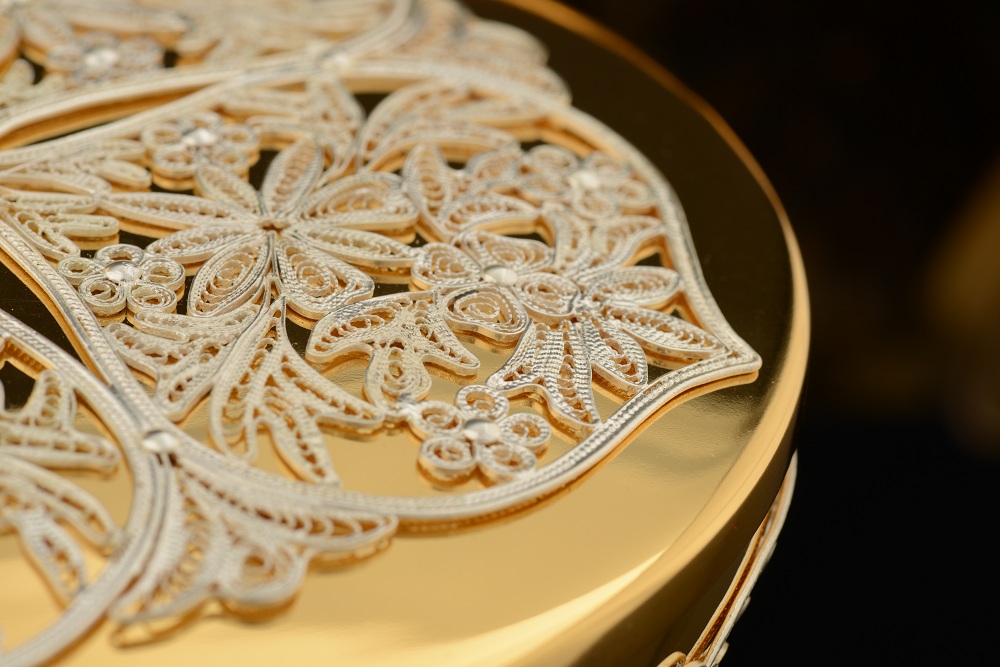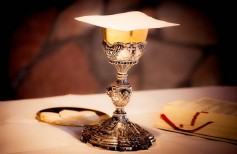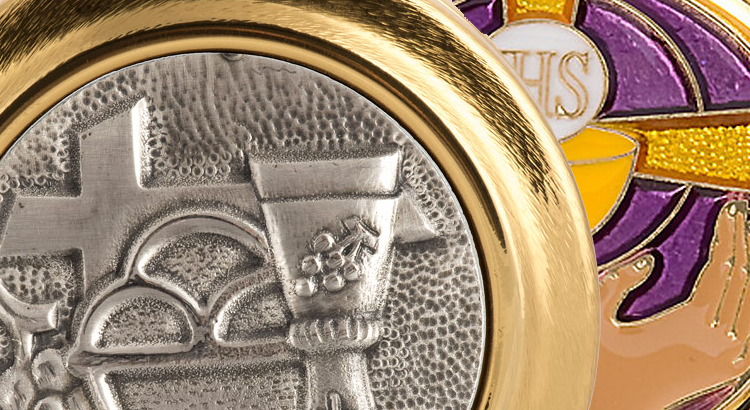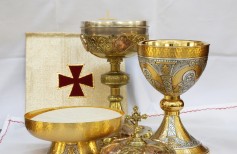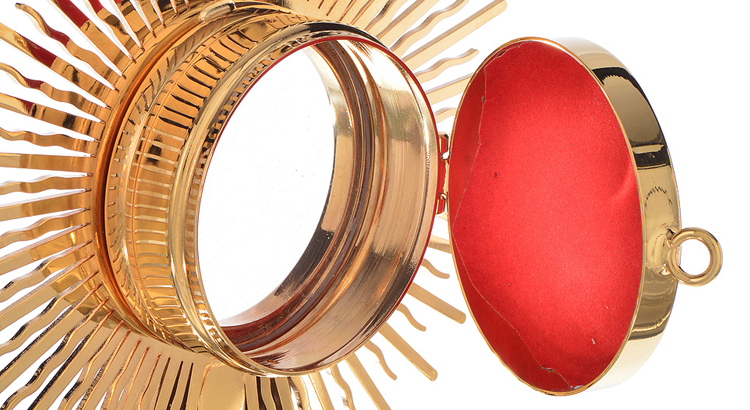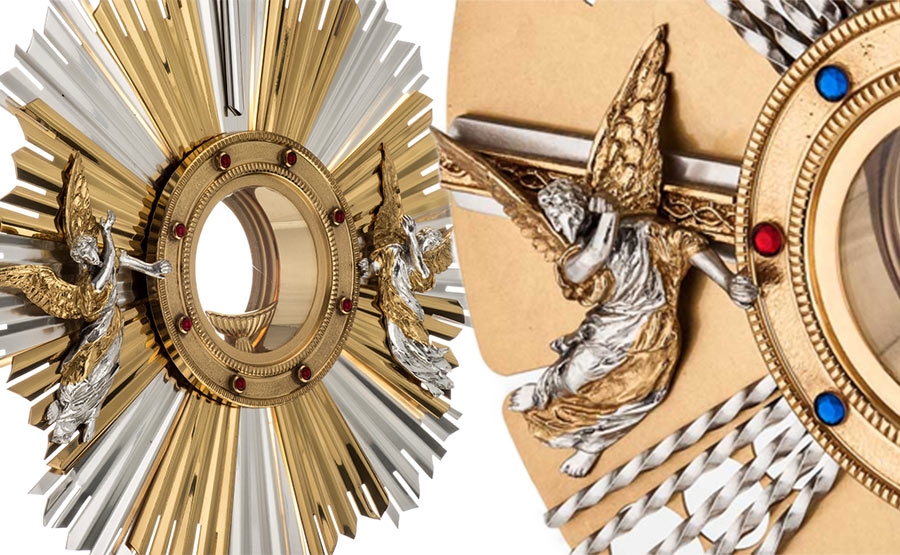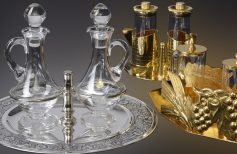Metal chalice is indispensable and important furnishings for the celebration. In fact, it is in the consecrated chalice that transubstantiation happens, and the wine becomes the blood of Christ. The uniqueness and greatness of this revelation has led over the centuries to the need for metal chalices to live up to the height of the content, which they were intended for.
Chalices in gold or silver therefore belong to the treasures of the Church since ancient times, often finely chiselled with figures in relief, adorned with pearls and precious stones. Rituals and liturgical requirements have also decreed the evolution of metal chalice in different directions, with an adjustment of shapes and materials, which has developed hand in hand with the history of the Church and that of art. Since always, metal chalice have been related to the concept of Eucharist and Passion. In the Middle Ages innumerable legends of the Holy Grail were born, the chalice used by Christ at the Last Supper, and then to collect his blood at the foot of the cross. This symbol used to unite in devotion men and women from all lifestyles and heritage. Faith and myth come together in the metal chalices of this age and the subsequent, enriched with decorative symbolic elements that recall the Passion and death of Jesus, his glorious Resurrection.
Distribution of bread and wine during the Communion needed over time a differentiation between the different kinds of metal chalice.
Other metal chalices, also unconsecrated, were necessary for other moments of the celebration.
Today, because of the simplification of the ritual, variety has reduced, but the need that the container is appropriate to the content remains unchanged. Metal chalice can be simple and modern, but should preferably have a golden interior and, in general, express at first glance the greatness of the mystery that they welcome.
On Holyart.co.uk you will find more than 250 metal chalices of different shapes and sizes.


